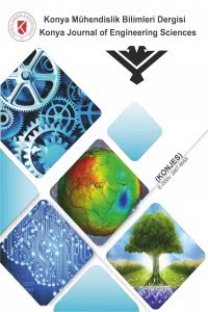Grup teknolojisi hücresi oluşturmada yapay sinir ağı modellerinin analizi
Üretim kaynaklarının etkili kullanımını sağlamak amacıyla son yıllarda üreticilerin ilgi odağı haline gelen ve araştırmacılar tarafından üzerinde yoğun araştırmalar yapılan Hücresel Üretim Sistemlerinin uygulamaya geçirilmesi için ilk adım olan tasarım aşaması bu çalışmanın kapsamını oluşturmaktadır. Bu çalışmada hücresel üretim sistemi tasarımında kullanılan üç yapay sinir ağı modeli Pascal programlama dilinde kodlanarak literatürden alınan toplam on adet problem üzerinde test edilmiş ve elde edilen sonuçlar dört farklı değerlendirme kriterine göre yorumlanmıştır.
Analysis of artificial neural networks models in cell formation problem
In this study, the design of cellular manufacturing systems, which has taken immens attention by researchers, has been studied. The first step of the cellular manufacturing system applications is to cluster the machines and parts. Three artificial neural network techniques are chosen. These algorithms are coded in PASCAL. Ten test problems are retrieved from the literature and applied to the algorithms. Results are analysed under four different criteria.
___
- Aljaber, Nv VcL, 1997, A Tabu Search Approach To The Cell Formation Problem; Computers Ind.Engng. 32,1,169-185.
- Boctor, F. F., 1991, A Linear Formulation Of The Machine-Part Cell Formation Problem;, Int. J. Prodn.Res. 29, 2, 343-356.
- Burbidge, J. L., 1991, Production Flow Analysis (Oxford: Clarendon Press).
- Boe, W.J., And Cheng, C.H., 1991, A Close Neighbour Algorithm For Designing Cellular Manufacturing Systems. Int.J. Prodn. Res. 29(10), 2097-2116.
- Carpenter, G.A., Grossberg, S., And Rosen, D. B., 1991, Fuzzy Art: Fast Stable Learning And Categorizing Of Analog Patterns By An Adaptive Resonance System. Neural Networks, 4, 759-771.
- Carpenter, G.A., and Grossberg, S., 1978, A massively parallel architecture for a self organizing neural pattern recognition machine. Computer Vision, Graphics and Image Processing, 37,54-115.
- Chu, C.H., 1993, Manufacturing Cell Formation By Competitive Learning; Int.J. Prodn. Res. 31, 4, 829-843.
- Chu, C-H., 1997, An Improved Neural Network For Manufacturing Cell Formation; Decision Support Systems, 20, 279-295.
- Kaparti, S., Suresh, N.C., 1992, Machine-compenent cell formation in group technology: a neural network approach. International Journal of Production Research, 18(2), 213-232.
- Kaparti, S., Suresh, N.C., 1994, Performance Of Fuzzy Art Neural Network For Group Technology Cell Formation; Int. J. Prodn. Res. 32, 7,1693-1713.
- King, J.R., 1980, Machine-Component Grouping Algorithm İn Production Flow Analysis: An Approach Using A Rank Order Clustering Algorithm. International Journal Of Production Research, 18 (2), 213-233.
- Leem, C.W;, Chen, J.G., 1996, Fuzzy Set Based Machine-Cell Formation in Cellular Manufacturing; Journal Of Intelligent Manufacturing, 7, 355-364.
- Moon, Y.B., 1990, Forming Part-Machine Families For Cellular Manufacturing : A Neural Network Approach; Int: J. Adv. Manufg. Technol. 5, 278-291.
- Moon, Y.B., Chi, S.C. 1993, Generalized Part Family Formation Using Neural Network Techniques; J. Manufg. Sys. 11,3,149-159.
- Mukhopadhyay, S.K., Vd., 1994, Machine-Compenent Grouping in Cellular Manufacturing By Multidimensional Scaling; Int. J. Prodn. Res. 32, 2, 457-477.
- Sarker, B.R., 2001, Measures of grouping efficiency in cellular manufacturing systems; European J. of Operational Res. 130, 588-611.
- ISSN: 1300-5200
- Yayın Aralığı: Yılda 4 Sayı
- Başlangıç: 2018
- Yayıncı: -
Sayıdaki Diğer Makaleler
Nokta konum duyarlıkları ile koordinat dönüşümü
Doğanşehir (Malatya) civarındaki ofiyolitik kayaçların jeolojik ve petrografik özellikleri
Grup teknolojisi hücresi oluşturmada yapay sinir ağı modellerinin analizi
Kırılma katsayısı ve ölçü ağırlıklarının trigonometrik nivelman dengelemesine etkisi
Sürtünme kuvvetinin yüzeyaltı çatlak ilerlemesi üzerindeki etkisinin araştırılması
Kubilay ASLANTAŞ, Süleyman TAŞGETİREN
Ergun KARACAN, Ahmet Turan ARSLAN
Genel hastanelerde teknolojik gelişmelerin bina ihtiyaç programına etkileri
